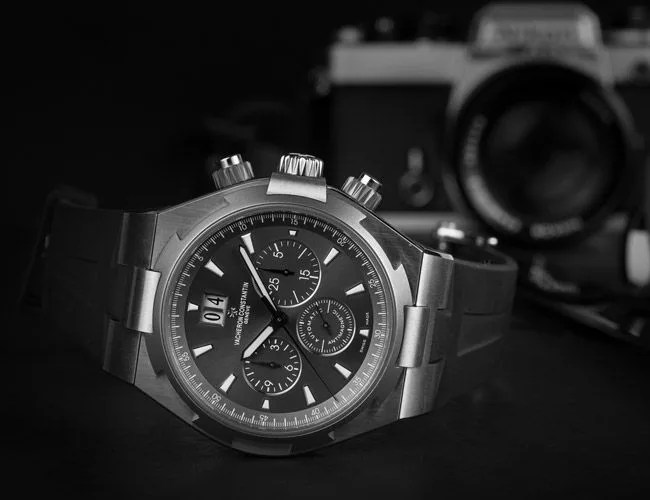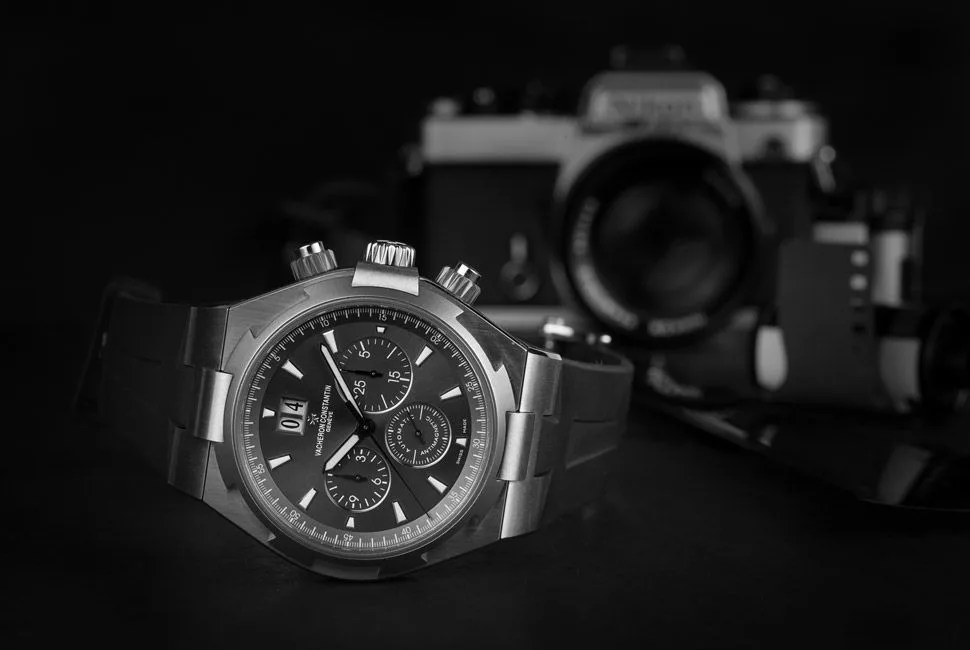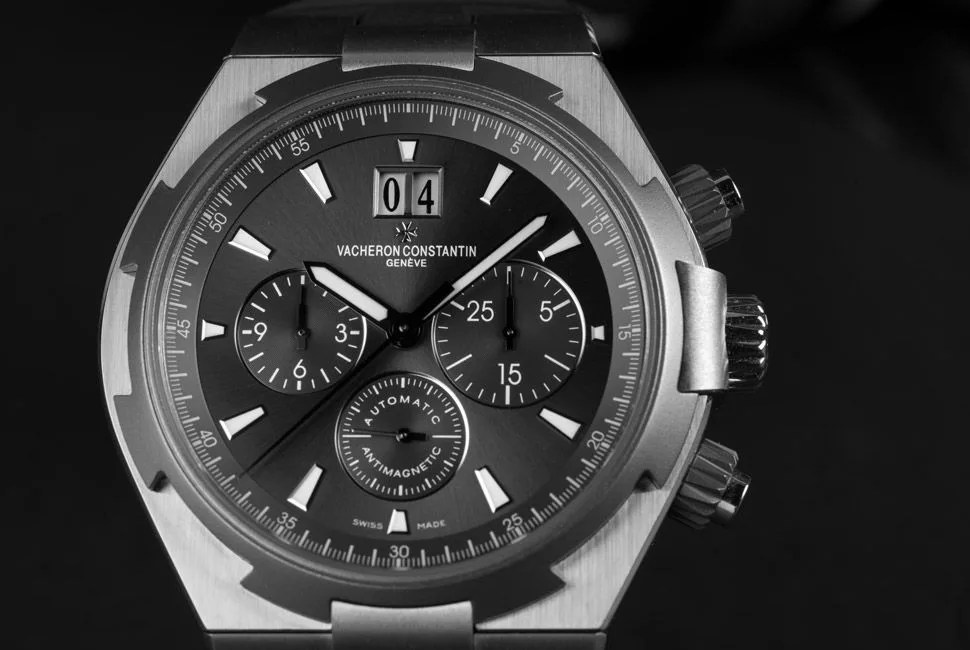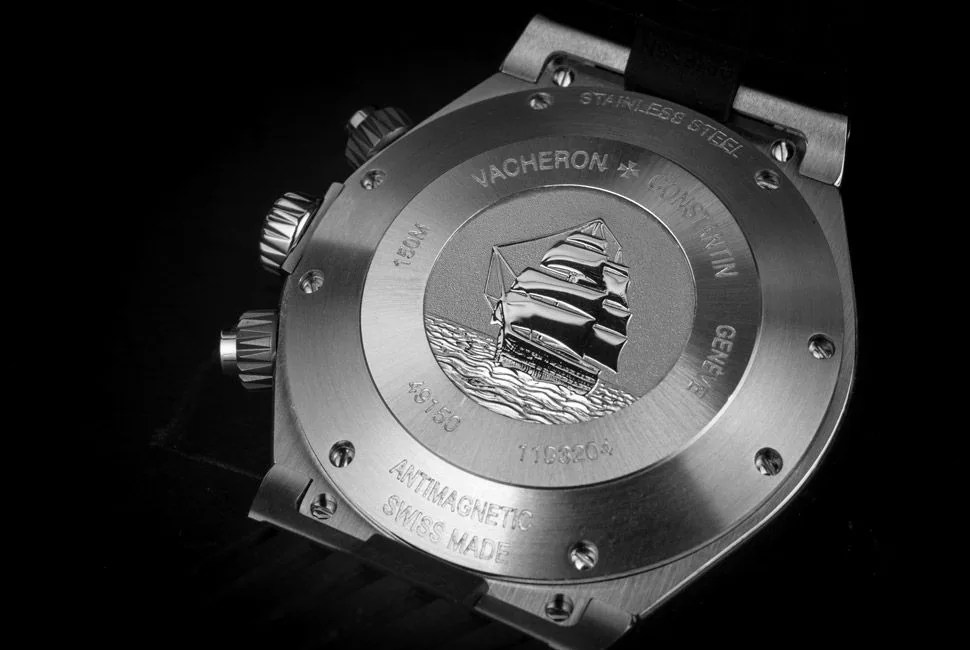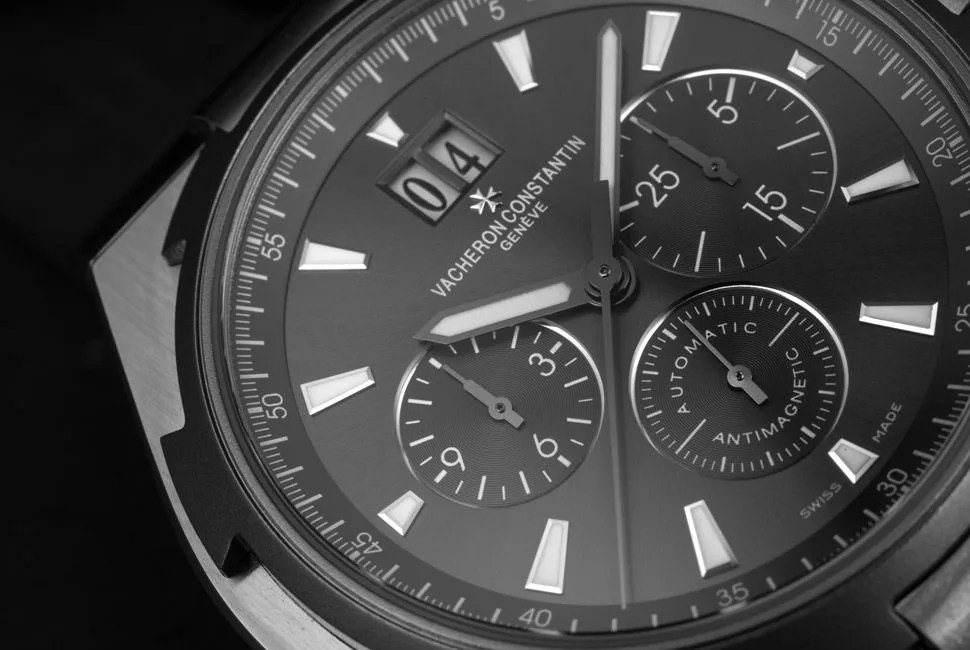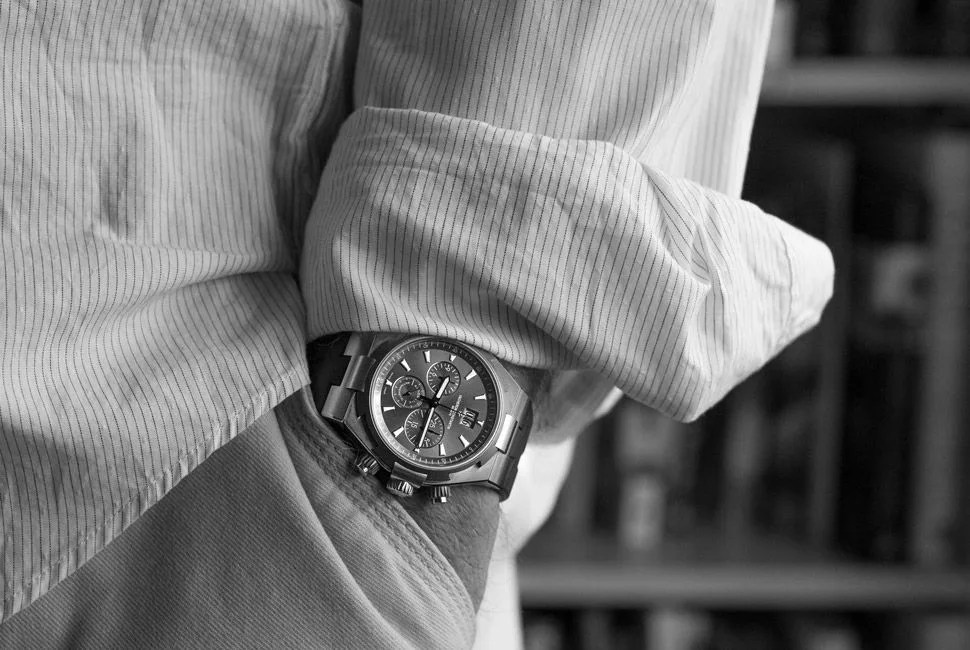5 photos
If you were to list the traits of an ideal watch, what would they be? Perhaps a refined mechanical chronograph movement, angular handsome design, plenty of water and magnetism resistance and a versatility that can dress up for the office and stay on your wrist for whatever the weekend holds. How about the pedigree of a prestigious 260-year-old watch company and excellent resale value? That list pretty much describes the Vacheron Constantin Overseas Chronograph, a watch that is a strong contender for the elusive “one watch” label, yet one that many people overlook. And that’s a pity, because it is a watch that deserves more attention, even if it doesn’t seek it.
Vacheron makes up one third of the so-called “Big Three” Swiss brands, named for their rich history of innovation and prestige, the other two being Audemars Piguet and Patek Philippe. But unlike the other two that get all the press and the celebrity ambassadors, Vacheron seems to fly under the radar. The company is the equivalent of the strong, silent type — the handsome, slightly nerdy guy in the office whom you discover is a retired pro cyclist who still wins his race category on weekends and dates an Ecuadorian supermodel.
The Overseas collection is Vacheron’s “sports watch” line and has its origins in the late 1970s. At that time, when the Swiss watch industry was on its knees due to pressure from cheap quartz watches from Japan, the Big Three introduced a trio of similar watches that flew in the face not only of their own traditions, but of logic in an era when cheaper was better. First, Audemars Piguet came out with its Royal Oak, a geometric sports watch in a steel case that cost more than most gold dress watches of the day. Within a few years, it became a hit and a cult object and Patek followed with its similarly styled Nautilus in 1976, a watch that is now a cornerstone of the brand’s collection. Vacheron’s entry into this luxury sports watch category is less known, perhaps due to its less than colorful name: the 222. Like the Royal Oak and the Nautilus, the 222 bore the integrated bracelet, industrial-looking bezel and angular case common to the era. It even made use of the same Jaeger-LeCoultre-derived calibre 920 that the other two used. While the 222 is now a collectible rarity, in a few years its descendants became the Overseas, a watch family that may have aged the best of all the Big Three’s 1970s gambles.
The first clue that the Overseas Chronograph is more than just a pretty face are the screw-down chronograph push-pieces. Seen more often on dive chronographs, screw-in push-pieces are a brutally utilitarian feature that prevent unintentional activation of the start/stop and reset buttons, aiding in water resistance and durability. Unscrewed, the push-pieces release with a satisfying click and the perfect level of resistance. This is thanks to the vertical clutch column wheel chronograph movement inside, which started its life as an F. Piguet base calibre but was then modified and refined by Vacheron.
The Overseas is the horological equivalent of a luxury crossover SUV — sleek, fast, rugged and versatile.
The second clue that the Overseas takes function as seriously as form, is the tiny arc of type at the bottom of the dial: “anti-magnetic”. External magnetism is a mortal enemy of the mechanical watch, and the industry standard for magnetic shielding is 4,000 A/m (amperes per meter), perfectly adequate for most of life’s scenarios. But the Overseas Chronograph boasts shielding up to 25,000 A/m, impressive for any watch but even more so for a chronograph from a luxury brand better known for its complicated dress watches. This magnetic shielding comes courtesy of a soft iron movement holder inside the case. This inner iron case necessitates the use of a solid steel case back in lieu of the now-ubiquitous sapphire case back. And while it’s a shame to not be able to see the beautifully finished column wheel calibre inside, there’s a sort of smug satisfaction just knowing it’s in there but only seeing the intricate sailing ship engraving on the back instead.
